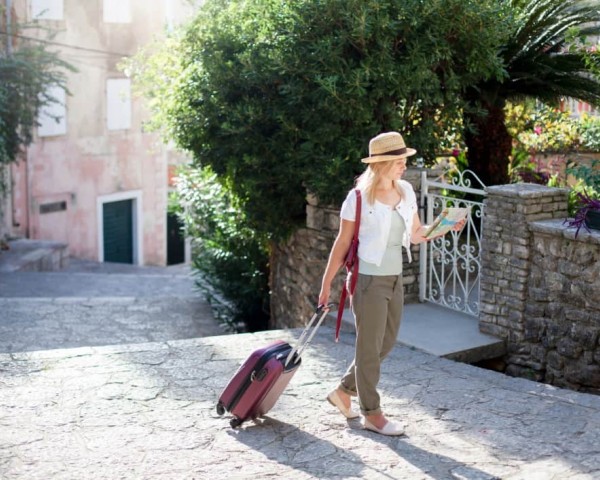Provisional data from the National Institute of Statistics (INE) indicates that Spain’s non-hotel tourism sector experienced a slight uptick of 0.6% in overnight stays during May 2025. This equated to just over 11.6 million stays. Apparently, the growth was mainly due to increased demand for tourist apartments (up 2.2%) and rural tourism accommodations (a more substantial 5.3%). It seems traveler preferences are shifting somewhat. Still, there are persistent issues, namely declining campsite and hostel stays and, of course, those ever-increasing prices.
Tourist Apartments Lead the Spanish Hospitality Sector
Tourist apartments recorded 8.5 million overnight stays. This represents a 2.2% increase compared to May 2024. A 3.4% increase in stays by domestic travelers mainly fueled growth. Foreign visitors contributed too, with a 1.7% uptick. The average stay lengthened slightly to 4.4 nights, a 2.5% increase. Although there was growth, overall occupancy did, in fact, dip a little, to 33.5% (down 0.7 points). Weekend occupancy did improve, reaching 38.7% (up 2 points). Non-residents accounted for the majority—74%—of these stays, with the UK providing most visitors at 35.7%.
The Canary Islands did especially well, registering over 2 million overnight stays, marking a significant 12.6% increase. Madrid, on the other hand, boasted the highest occupancy rate at 77%. The Gran Canaria region recorded 705,000 stays, topping tourist areas, while Lanzarote shined, with an 83% occupancy rate. Notable hotspots included Mogán, San Bartolomé de Tirajana, and Arona, among others.
Rural Tourism Gains Traction
The rural tourism segment in Spain also gained traction, witnessing a 5.3% rise in overnight stays. Again, domestic travelers were a significant factor, with an 8.8% increase in stays. Non-resident stays only increased slightly, by 0.3%. Average occupancy was up to 20.3%, a solid 6.3 percentage point increase. Weekend occupancy also rose, hitting 33.6% (up 1.1 points). Interestingly, despite a relatively hefty 10.8% year-on-year drop, the Balearic Islands held onto their position as the top destination. They reported 182,000 stays and led in occupancy at 50.3%. Mallorca was most popular, with over 134,000 stays, while Ibiza and Formentera achieved the highest occupancy, registering 57%.
Campsites and Hostels Across Spain Face Declines
However, campsites and hostels aren’t doing so well, sadly. Campsites saw a 0.7% drop in overnight stays. A 6.6% decline among non-residents cancelled out the 5.2% rise among residents. Occupancy slipped to 38%, a 3.9 percentage point decrease. Catalonia led with 1.8 million stays, while La Rioja hit the highest occupancy at 55%. The Costa Brava topped areas with 780,000 stays, and Costa Blanca led in occupancy at 71.1%. Benidorm, Mont-roig del Camp, and Torroella de Montgrí proved to be popular locations.
Hostels experienced the most significant decline, reporting a substantial 9.7% drop in stays, broken down as 8.4% for residents and 10.7% for non-residents. Occupancy also fell, reaching 35.4%, a decrease of 3.3 percentage points. Galicia was the most visited destination, with the Balearic Islands achieving the highest occupancy at 61.7%.
Rising Prices Add Pressure
Tourist accommodation prices in Spain kept climbing in May 2025. The Tourist Apartment Price Index (IPAP) increased by 5.3%, the Campsite Price Index (IPAC) by 3.5%, and the Rural Tourism Price Index (IPTR) by 7.1% compared to May 2024. These price rises, presumably fueled by higher operational costs, might negatively impact Spain’s image as a budget-friendly destination. This could be especially problematic for campsites and hostels already dealing with declining demand.
A Mixed 2025 Outlook for Spanish Hospitality Sector
The expansion of tourist apartments and rural accommodations seems to show that Spain is still very appealing for diverse travel experiences, including both urban and countryside getaways. Yet, the downturn in campsite and hostel stays, in combination with rising prices, suggests that there are challenges. As domestic travelers help bolster the sector, it’s clear that Spain needs to find the right balance between affordability and service quality to keep attracting international visitors, particularly those from important markets like the UK. With the Canary Islands and Balearic Islands leading in demand, strategic investments in sustainable tourism and better infrastructure could help ensure continued growth throughout 2025.

